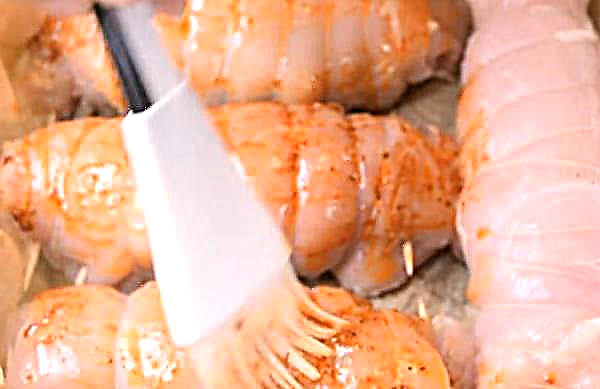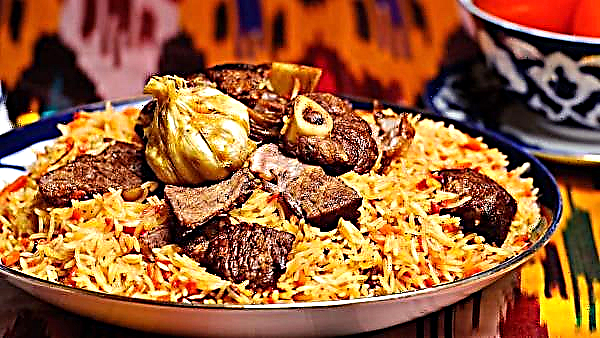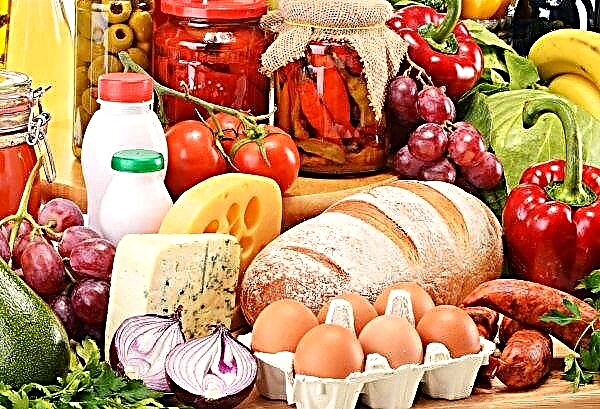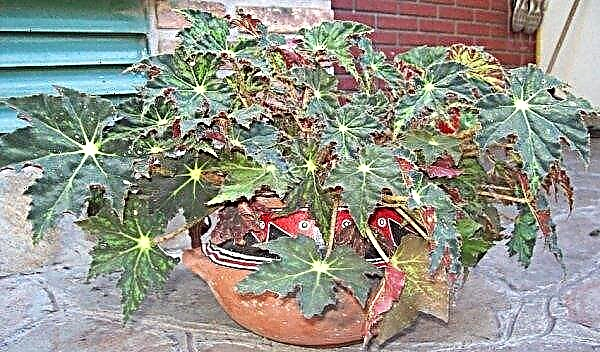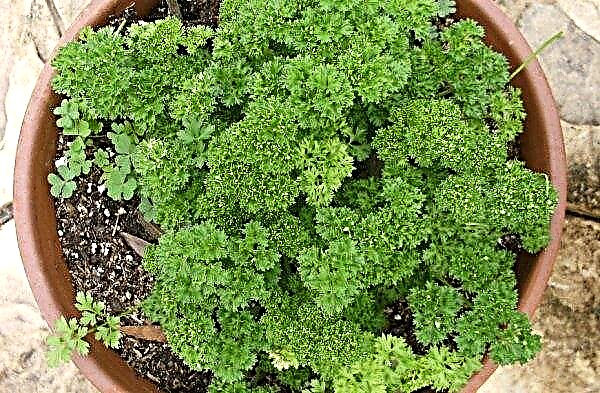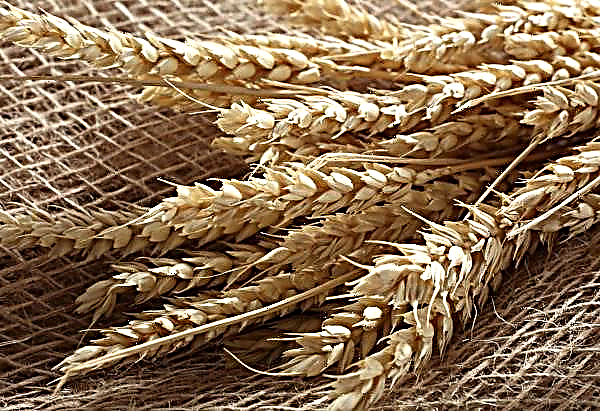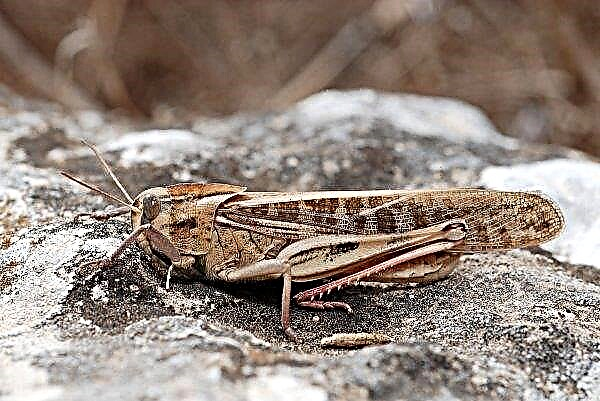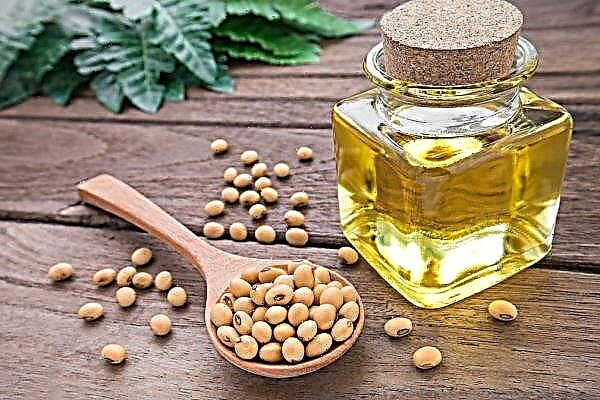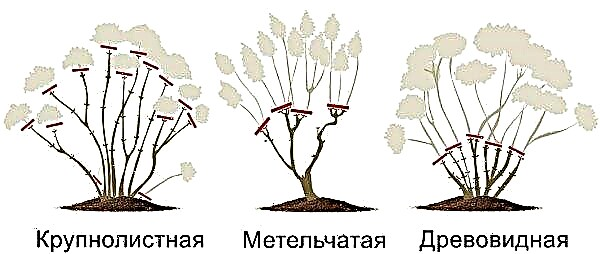Lakenfelder is a rare species of chickens with an unusual black and white color and good productivity. In this article, we will consider the characteristics of the breed and tell you how to breed motley pets at home.
History of occurrence
There is little data on this breed. It is known that she was bred in the Belgian Zottegem and the Dutch Lakervelt, from where their current name came from. Breeding work was aimed at obtaining meat and egg type of productivity. It was brought to Great Britain in 1901, and after 38 years it joined the ranks of American breeds. Modern crosses crowd out the Lakenfelder population, which can lead to their complete extinction.
General characteristics
Non-standard color distinguishes representatives of the Lakenfelder breed among their relatives, and hens are also endowed with a number of constitutional, productive and behavioral characteristics, discussed below.
Appearance
The breed is notable for mild sexual dimorphism: females are not inferior in size to males, the rounded belly, the absence of long feathers on the tail, as well as the reduced crest and catkins are distinguished from the chicken roosters, a more detailed description of the exterior is given in the table.
| Characteristic | Description |
| Head | medium sized, wide, red face not covered with feathers |
| Crest | large, erect, leaf-shaped, bright scarlet, the rooster may have 5-6 pronounced teeth |
| Beak | powerful, gray |
| Neck | medium length, covered with long black feathers falling on the shoulders |
| Chest | deep, wide, full, protruding forward |
| Stomach | full, well developed |
| Wings | long, slightly a bit low, tightly pressed to the body |
| Tail | set high, lush |
| Paws | medium length, metatarsus neoplastic, dark gray |
| Plumage and color | black and white color, regardless of gender, head, neck, tail are covered with dark plumage |
Important! A large comb and catkins testify to the good productive qualities of the male.
Temperament
Representatives of the breed are endowed with an active type of temperament, with pronounced forager qualities: they often fly out of the aviary in search of food. They are easily tamed, live in families of 10 females per 1 leader, roosters are calm, but in case of danger they show courage.
Advantages and disadvantages
The positive features of the Lakenfelders include:
- unusual color;
- adaptation to low temperatures;
- peaceful temperament;
- rare species, valued at exhibitions.
When starting breeding, one should not forget about a number of disadvantages:
- average productivity;
- compulsory walk;
- difficulty in acquiring;
- marriage of coloring.
Features of keeping at home
Lakenfelders are not difficult to maintain, but nevertheless, proper conditions are needed to realize the productivity and preservation of young animals.
Chicken coop
For night and seasonal maintenance, you need a spacious room with a calculation of 1 square. m per 1 head without drafts. Perches should be built at a height of 50 cm in two rows at a distance of 35 cm from each other, on average, at least 25-30 cm of poles per bird. Nests are arranged for laying hens in a dark corner, for this you can use boxes and baskets covered with hay. Nest parameters: depth - 35–40 cm, width and height - 30 cm each. The number of nests is planned based on the norm - 1 place for 5 goals. As litter use hay or sawdust. An “bathing” zone is also necessary, for this purpose sand and ash are mixed in a bath in a ratio of 1: 2, which serves as an excellent remedy for feather parasites. The optimum temperature for keeping is considered to be +12 ... + 16 ° C, the duration of daylight hours is 10–12, and during the period of egg laying - 14–16 hours. Housekeeping is carried out once a week, changing the litter and contents of the bath.
An “bathing” zone is also necessary, for this purpose sand and ash are mixed in a bath in a ratio of 1: 2, which serves as an excellent remedy for feather parasites. The optimum temperature for keeping is considered to be +12 ... + 16 ° C, the duration of daylight hours is 10–12, and during the period of egg laying - 14–16 hours. Housekeeping is carried out once a week, changing the litter and contents of the bath.
Important! Untimely cleaning entails an increase in humidity and the spread of parasites.
Feeding troughs and drinking bowls
There are no special requirements for the selection of feeders and drinkers, you can choose any of the existing species. It should be placed where the birds spend most of the time: in the warm season it is a walking yard, in the winter - a chicken coop. They are attached to the wall or placed on a platform.
Walking patio
Lakenfelders need a large yard for walking due to dense plumage, the bird can withstand temperatures up to -10 ° C. The standard area per head is at least 1 square meter. m. Given the love of flying, it is necessary to protect the walking area, for this mesh netting and nylon are suitable, the height is 1.8–2 m.
Seasonal molt
In the autumn, birds begin to molt. This is a great stress for the body, accompanied by a complete decline in egg production and a painful appearance. Shedding lasts about 60 days, during this period it is important to provide a diet with a high protein content (but not more than 5%), daily exercise and uninterrupted access to clean water.
Did you know? Hens do not distinguish between their own and others' eggs and hatch everything in a row.
Herd replacement planned
The Luckenfelders have a lifespan of 7 years, but already in the third year the egg load is significantly reduced. It is recommended to renew the herd every 3-4 years, replacing old laying hens with young ones.
What to feed
It is quite difficult to make a balanced diet for birds, but it is necessary, for this we recommend using special compound feeds and bioadditives, which will ensure high productivity and preservation.
Chickens
The first meal is carried out 12 hours after hatching, for this, a grated boiled egg with the addition of cottage cheese and cereals is suitable. Such a diet is observed for 2 weeks, every 2 hours, after which they switch to a standard feed with the obligatory addition of green grass. They also provide free access to water, to which potassium permanganate can be added in order to improve digestion.
Did you know? For the first time, hens were domesticated almost three millennia ago on the territory of modern Ethiopia.
Adult chickens
When choosing natural feeds, wet wet cereals made from beans and grains should be preferred. Mixers are served fresh, slightly warm. In summer, a large amount of freshly chopped grass is added, in the winter - grass flour. Egg shells, shell powder, salt are used as additives, they are added to the diet daily in small quantities. In winter, they feed three times a day; in summer, the ratio is reduced to 2.
Addiction to disease
Hens of this breed are susceptible to diseases of the digestive system of an infectious nature:
- salmonellosis;
- coccidiosis;
- infectious bursitis.
To prevent disease, follow simple rules:
- Keep clean in the chicken coop.
- Choose quality feed.
- Keep feathers and droppings out of the water.
- Separate from the main herd of sick individuals.
- Get vaccinated (1 month old).
- Provide birds with bathtubs for bathing.
Having settled the Lakenfelders on your farmstead, you will get not only the opportunity to admire the unique color of birds, but also valuable food. A calm disposition and unpretentiousness in the content will bring only pleasure in breeding a rare breed.

